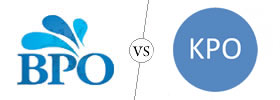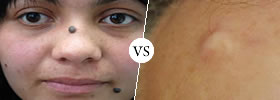Difference between Sugar and Cane Sugar
Key difference: Sugar is the generalized name for sweet-flavored food substances. Sugars can be made from a variety of different substances. Sucrose, table sugar, is mainly extracted from either sugarcane or sugar beet. The current biggest source of white sugar is sugarcane. This sugar, i.e. processed from sugarcane, is called cane sugar.
 Sugar is the generalized name for sweet-flavored food substances. Sugars are categorized as carbohydrates, which are a group of compounds made up of carbon, hydrogen and oxygen. Carbohydrates, and in turn sugars, are the source of chemical energy for living organisms, including humans. Sugars are categorized as monosaccharide, disaccharides and polysaccharides. Monosaccharides are the simplest carbohydrate type, composed of a single molecule. These include glucose, galactose, and fructose. Disaccharides are made up of two molecules. The table sugar, also known as sucrose, most commonly used by humans, is a type of disaccharide. Other disaccharides include maltose and lactose.
Sugar is the generalized name for sweet-flavored food substances. Sugars are categorized as carbohydrates, which are a group of compounds made up of carbon, hydrogen and oxygen. Carbohydrates, and in turn sugars, are the source of chemical energy for living organisms, including humans. Sugars are categorized as monosaccharide, disaccharides and polysaccharides. Monosaccharides are the simplest carbohydrate type, composed of a single molecule. These include glucose, galactose, and fructose. Disaccharides are made up of two molecules. The table sugar, also known as sucrose, most commonly used by humans, is a type of disaccharide. Other disaccharides include maltose and lactose.
Sugars can be made from a variety of different substances. Fructose, also know as fruit sugar, is a naturally and most commonly produced sugar in fruits and plants. Fructose can be found in honey, tree and vine fruits, flowers, berries, and most root vegetables. Fructose is not synonymous with high fructose corn-syrup (HFCS), which is an artificially created and processed sweetener.
While, the white sugar that we commonly use is sucrose, also known as saccharose. Sucrose appears as a white, odorless, crystalline powder with a sweet taste. As a disaccharide, it is made up of two molecules; one of glucose and one of fructose via a glycosidic bond. Sucrose is mainly found in sugarcane and beet roots, from which majority of the table sugar is processed. Sucrose is also found in molasses, brown sugar and maple syrup. Fruits usually contain small amounts of sucrose and varying proportions of fructose and glucose.
Sucrose, table sugar, is mainly extracted from either sugarcane or sugar beet. The current biggest source of white sugar is sugarcane. This sugar, i.e. processed from sugarcane, is called cane sugar. Cane sugar became a popular sweetener in the 18th century, after sugarcane plantations were set up in the West Indies and Americas. However, sugar was being produced as far back as the ancient times in India, and subsequently in China. After the 18th century, sugar was very popular, but rare, and it could only be afforded by the wealthy. Hence, sugar was often called “white gold.”
 Sugar is processed through a long process. First the juice is extracted from the sugarcane, and is then purified with lime and heat. Then it is further processed, and it eventually separates into sugar crystals and molasses. The sugar crystals are bleached and refined to give the end product, which we buy at the supermarket. This is the traditional white sugar.
Sugar is processed through a long process. First the juice is extracted from the sugarcane, and is then purified with lime and heat. Then it is further processed, and it eventually separates into sugar crystals and molasses. The sugar crystals are bleached and refined to give the end product, which we buy at the supermarket. This is the traditional white sugar.
Cane sugar is available in many forms in the market. Some of the forms of cane sugar available are granulated white sugar or table sugar, superfine (castor or caster) sugar, coarse (decorators or pearl) sugar, crystal sugar, confectioners, powdered or icing sugar, invert sugar, brown sugar, raw sugar, Demerara sugar, Muscovada or Barbados sugar, Turbinado sugar, etc.
Other than cane sugar, many other forms of sugar, i.e. processed from other sources are available on the market. Sugar can be derived from honey, many fruits (such as dates and coconuts) and tree saps. Some of the various types of sugar available on the market are palm sugar, some forms of fruit sugars and various different types of sugar syrups, including honey, maple syrup, corn syrup Agave syrup, Yacon syrup, rice syrup, etc.
Image Courtesy: yoganonymous.com, laborrightsblog.typepad.com









Add new comment